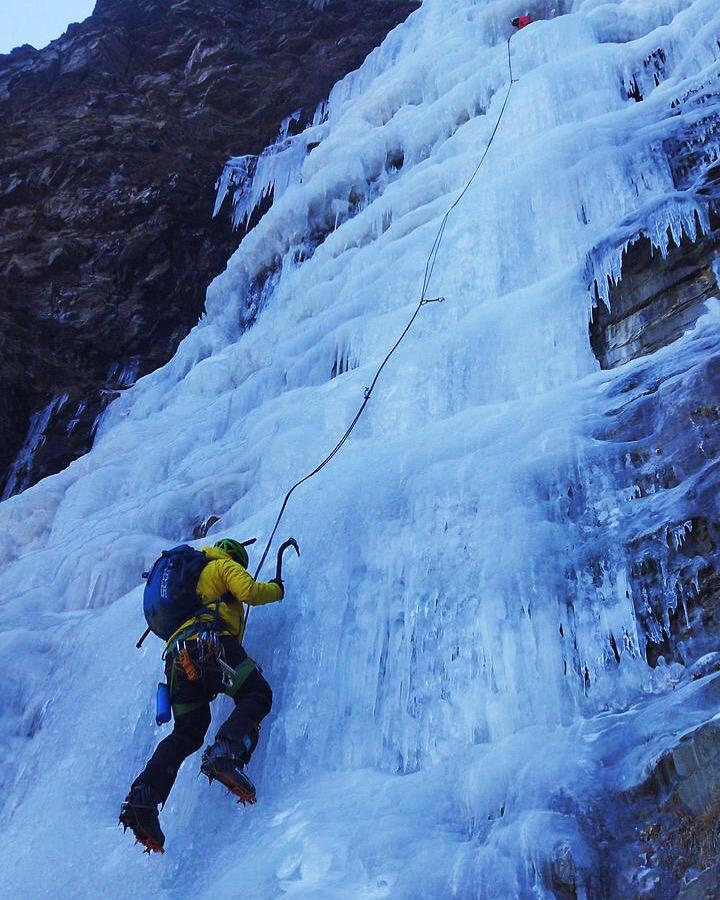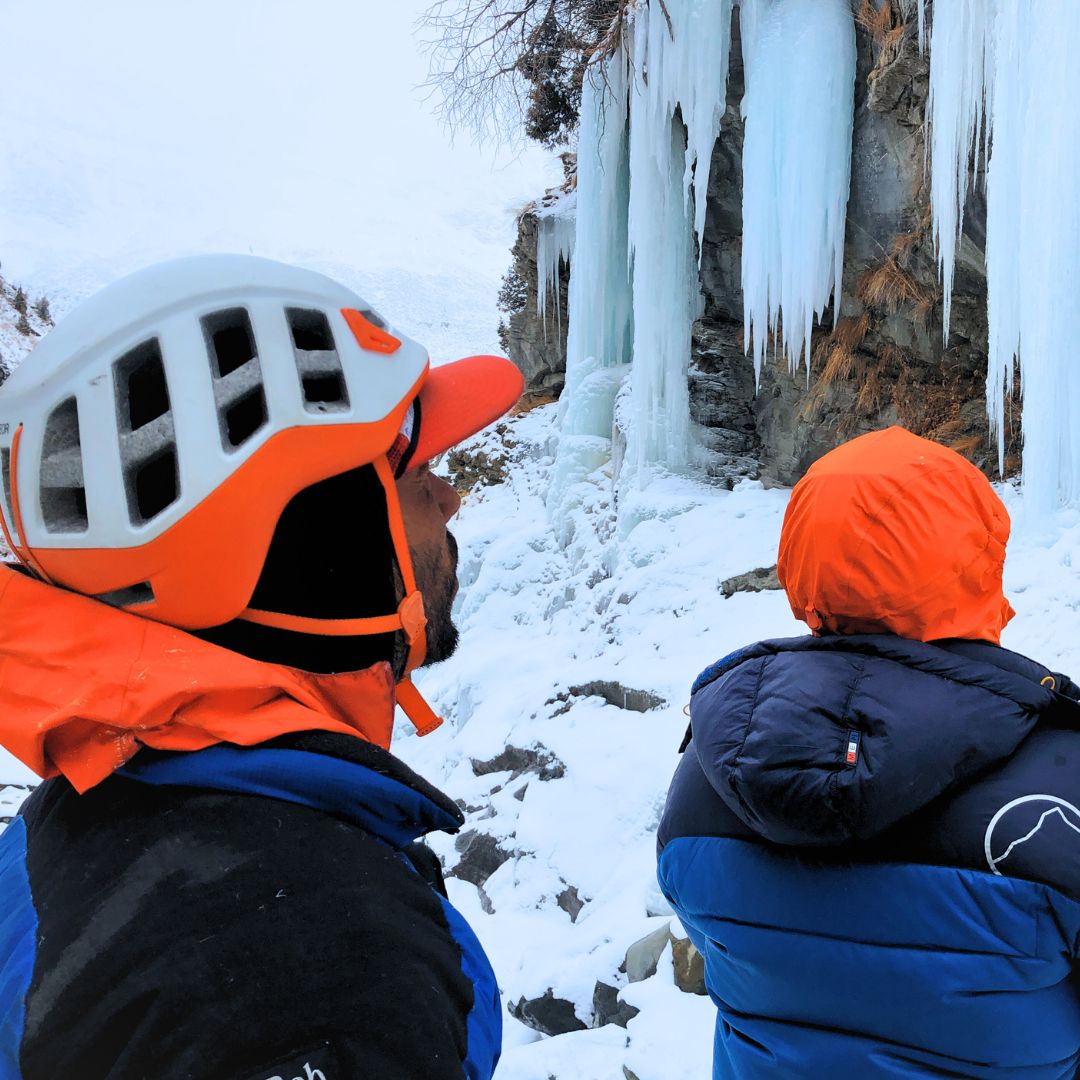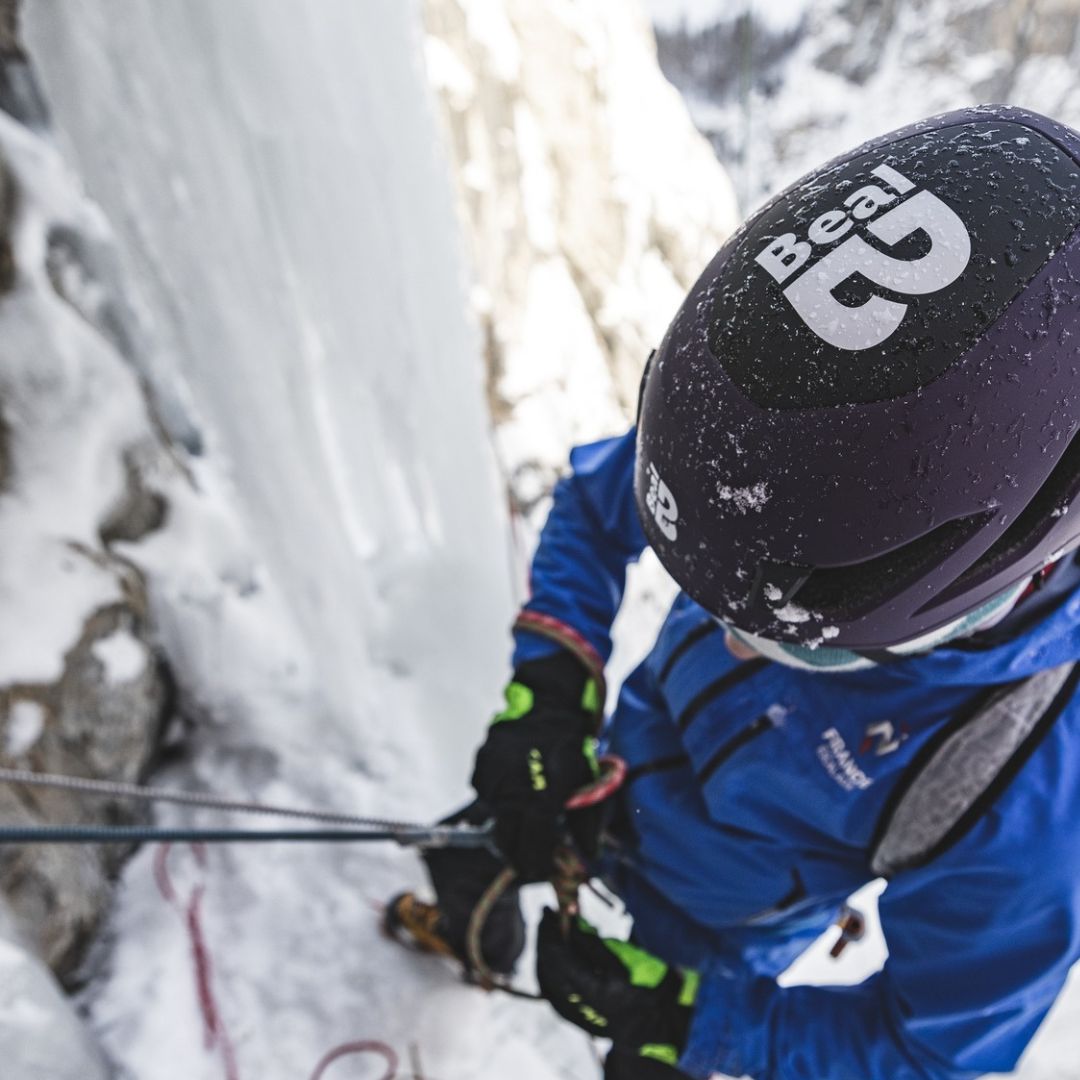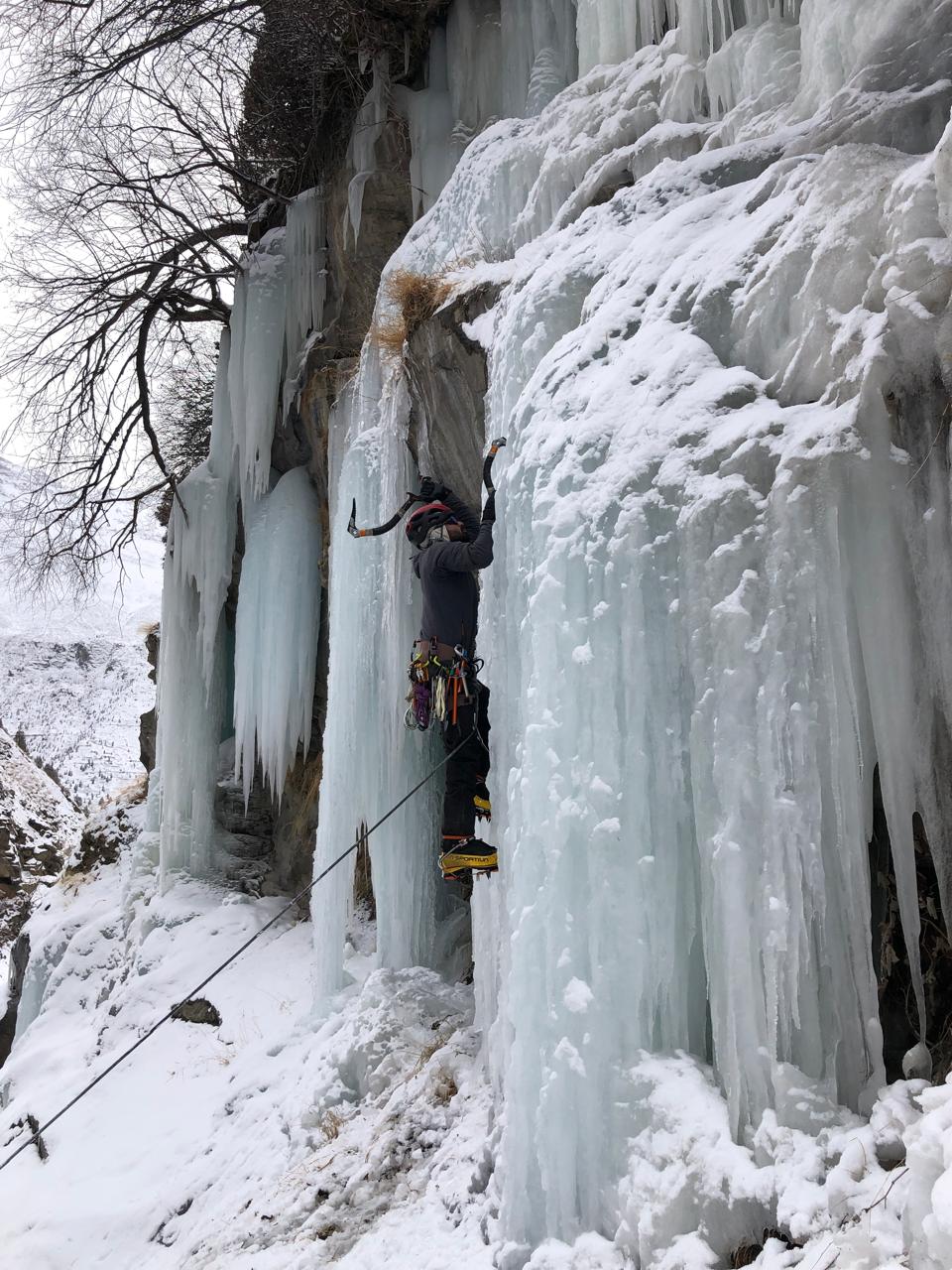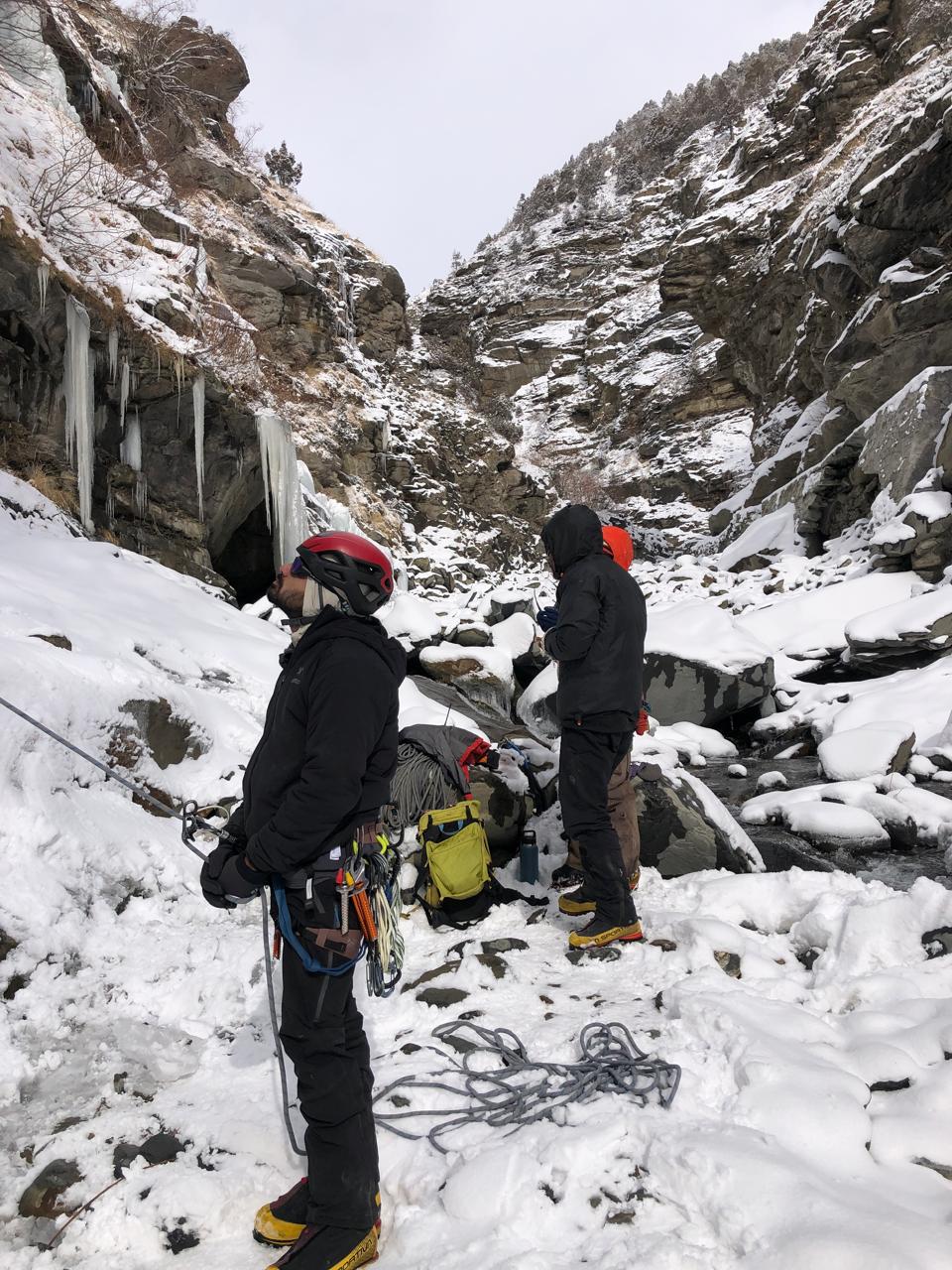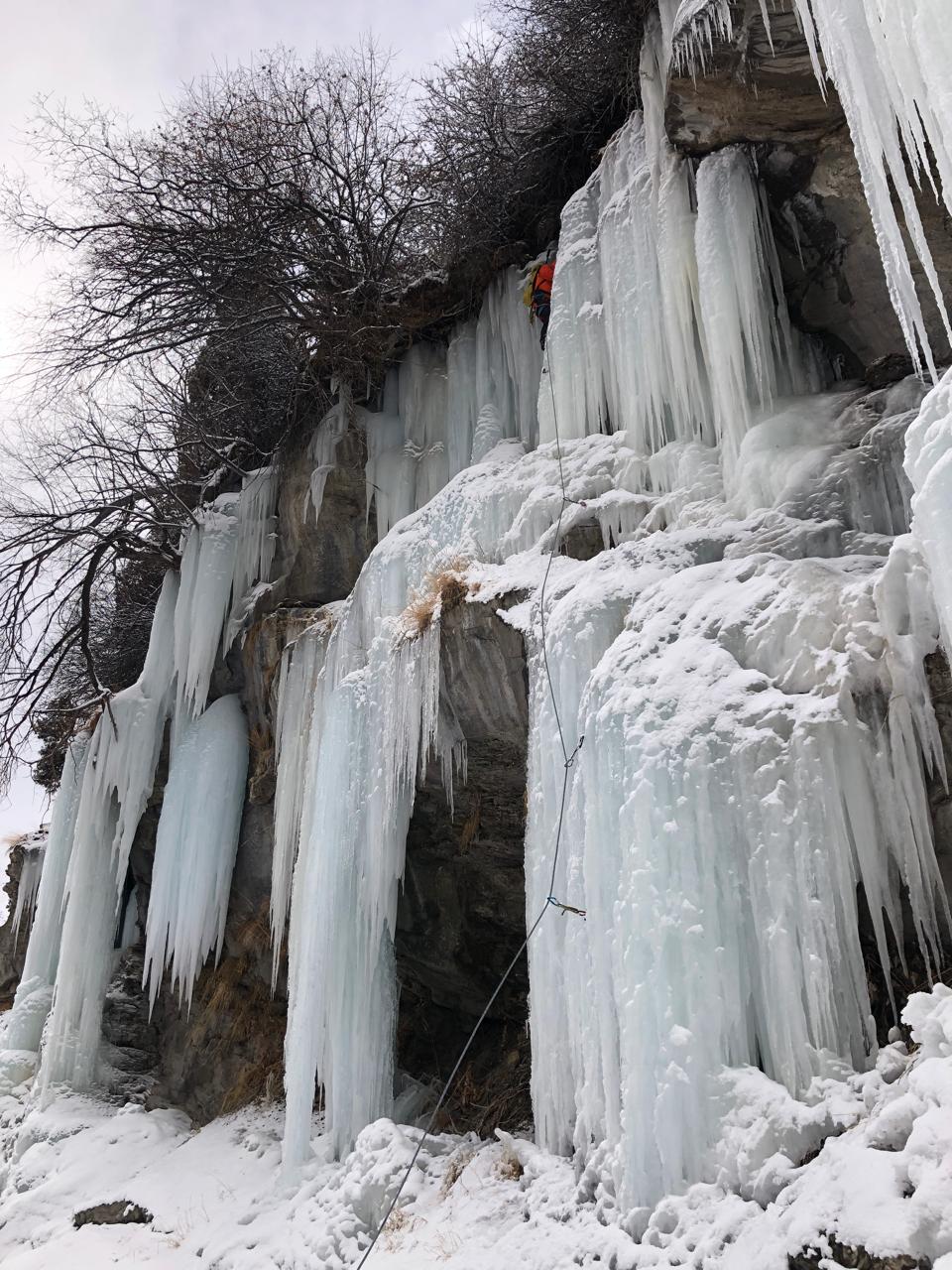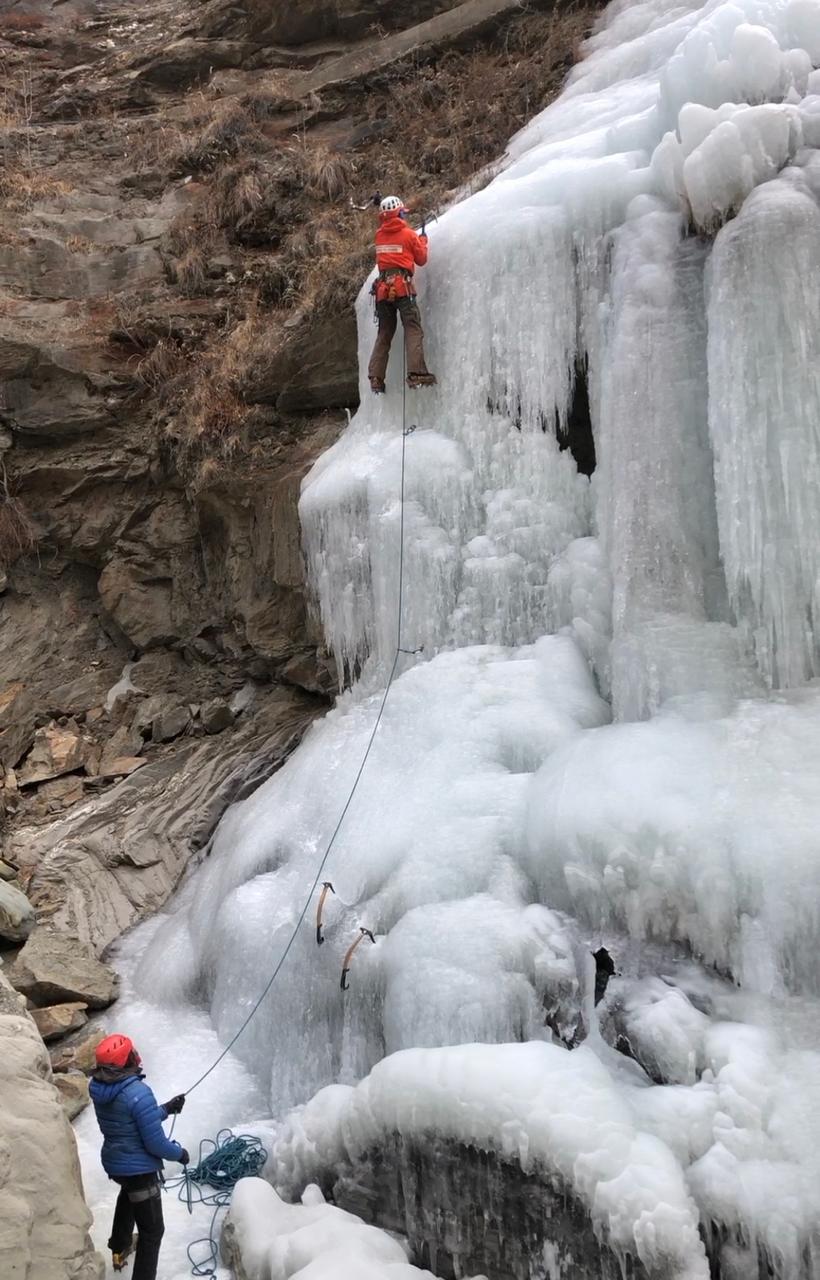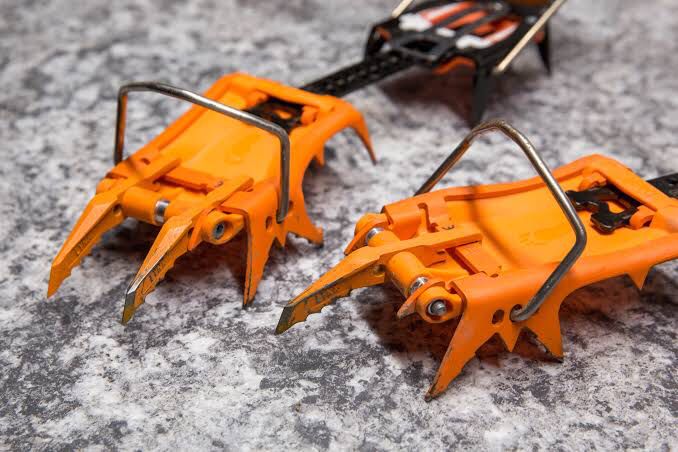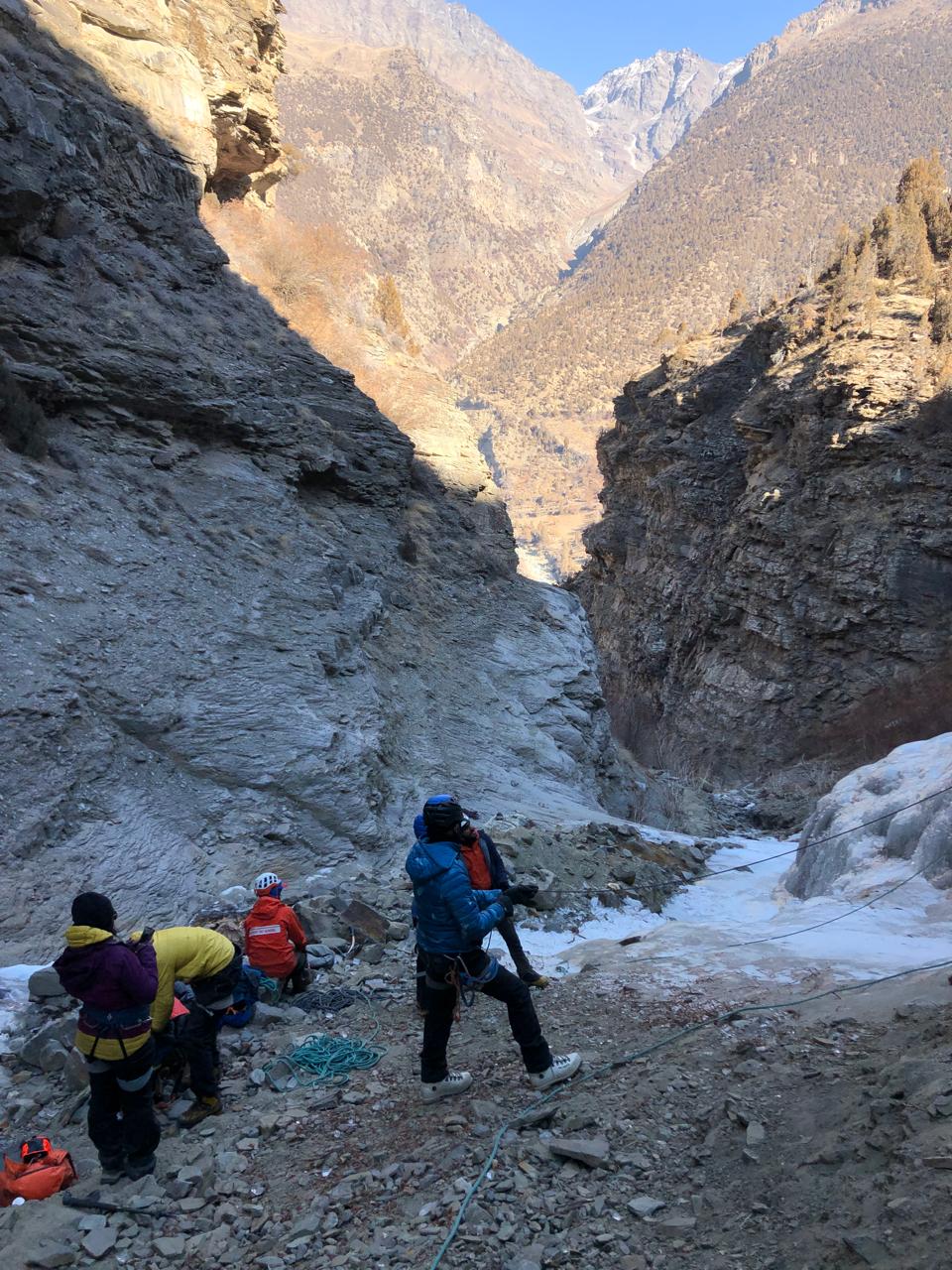Ice Climbing Course 2025/26
Ice Climbing Course 2025/26
Ice climbing opens up new realms for climbers, challenging their techniques on frozen waterfalls and alpine ice formations.
In the alpine environment, conditions are unpredictable—rock routes can quickly become verglas-lined faces or ice-choked cracks. This unpredictability demands advanced skills and tools to adapt effectively.
By integrating ice climbing into your skill set, you expand your horizons beyond summer rock faces into the dynamic world of winter conditions.
Ice climbing is no longer merely a hurdle on the path to the summit; it is a stand-alone adventure.
This discipline can be pursued independently or as part of a broader mountaineering expedition. Unlike traditional mountaineering courses in India that often focus on outdated techniques and alpine ice, our course offers modern methods and cutting-edge practices.
Book Before 5th December and get 7000/- off : to book call us at 9810619083 or drop an email at info@skimo.in
Includes
Includes
- Lodging: Twin and triple sharing rooms for a 7-night stay
- Dining: All meals included—breakfast, packed lunch, and dinner
- Local Transportation: Inland travel during the course is covered
- Group Gear: Technical equipment provided, including ice axes, ropes, harnesses, helmets, crampons, avalanche beacons, and safety and first aid gear
- Guiding Fees: Fees for guiding are included
- Avalanche Workshop Modules: Comprehensive training on avalanche safety and rescue techniques
Whats not included
Whats not included
- Personal Gear: Items such as personal clothing, personal safety equipment, and individual accessories are not provided
- Travel to and from the Course which is Keylong:
- Additional Meals: Meals outside the provided meal plan or any special dietary requests are not covered
- Insurance: Personal travel or accident insurance is not included and should be arranged separately
- Accommodation Upgrades: Any upgrades or additional lodging beyond the provided shared rooms are not included
Location Stats
Location Stats
Group Size: 3 to 12
Age: 15 to 50
Fitness: Basic Physical Fitness
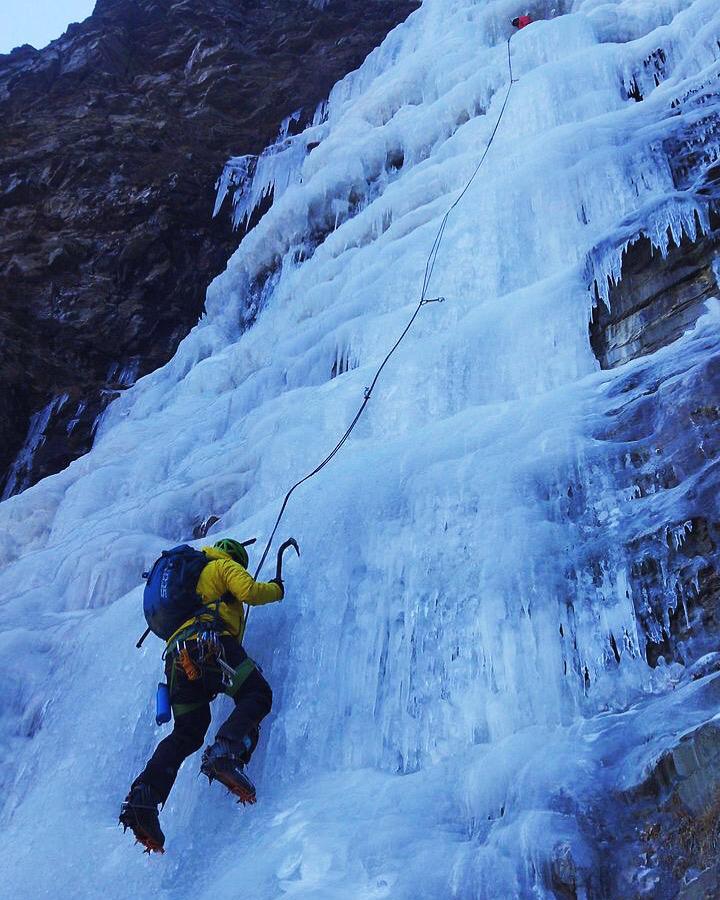
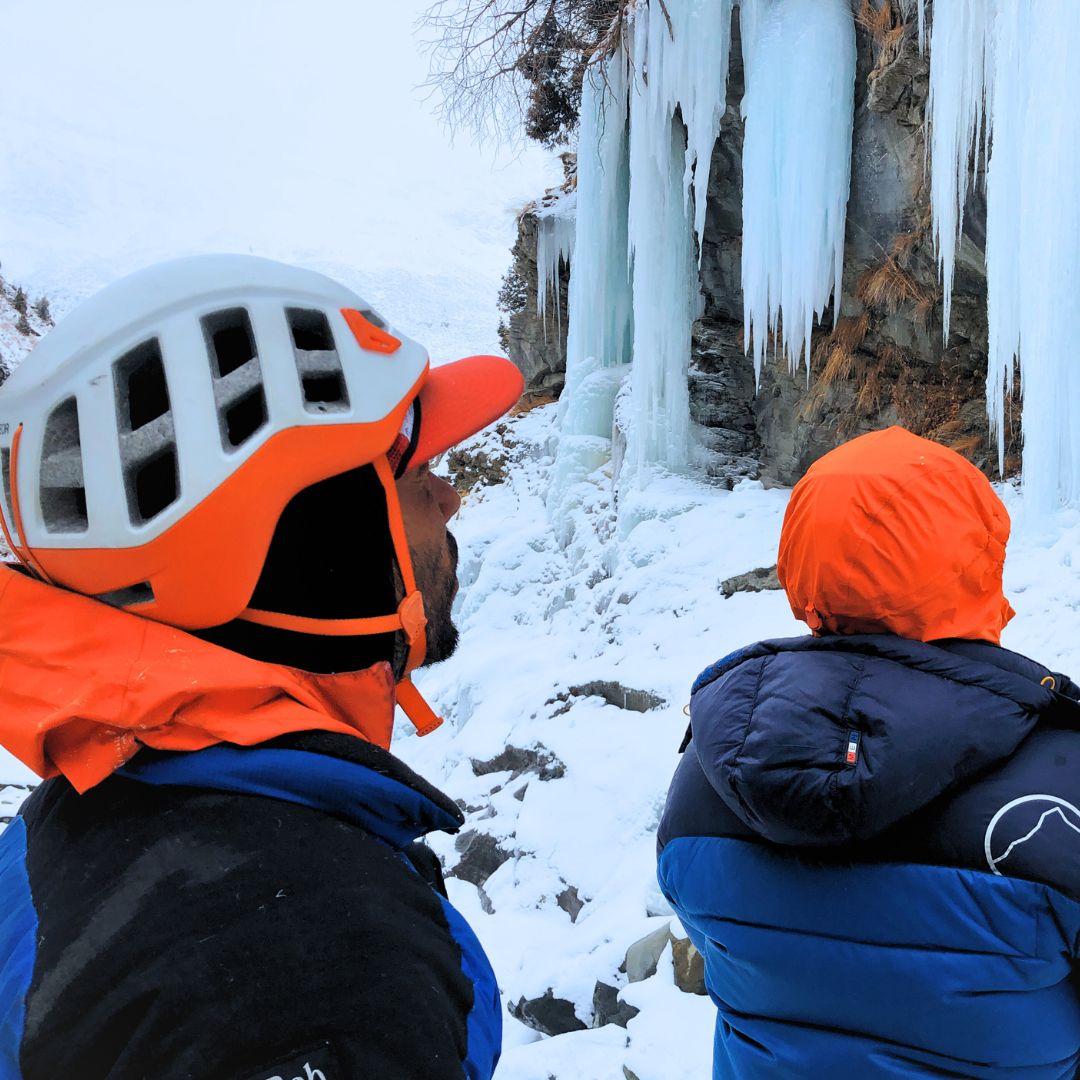
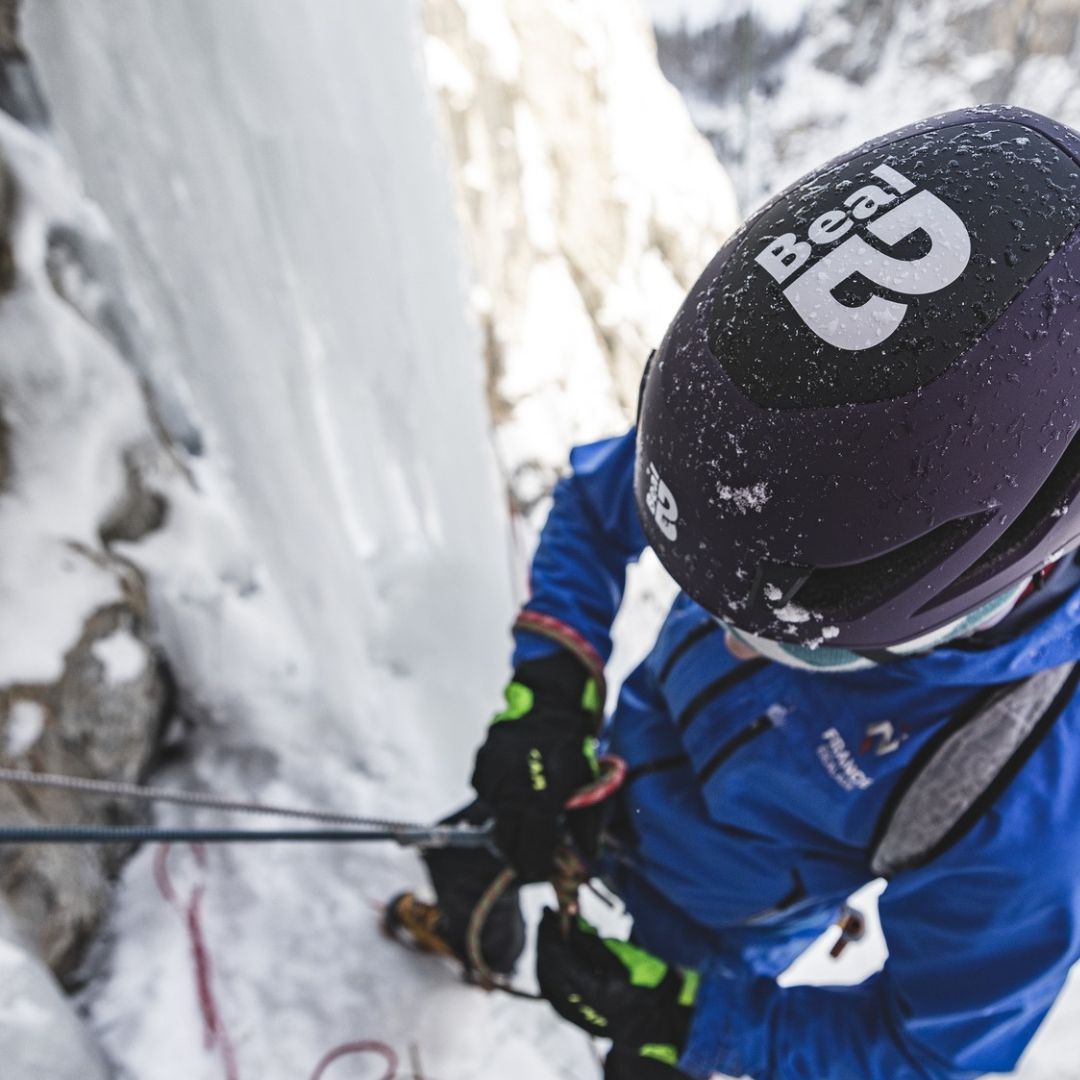
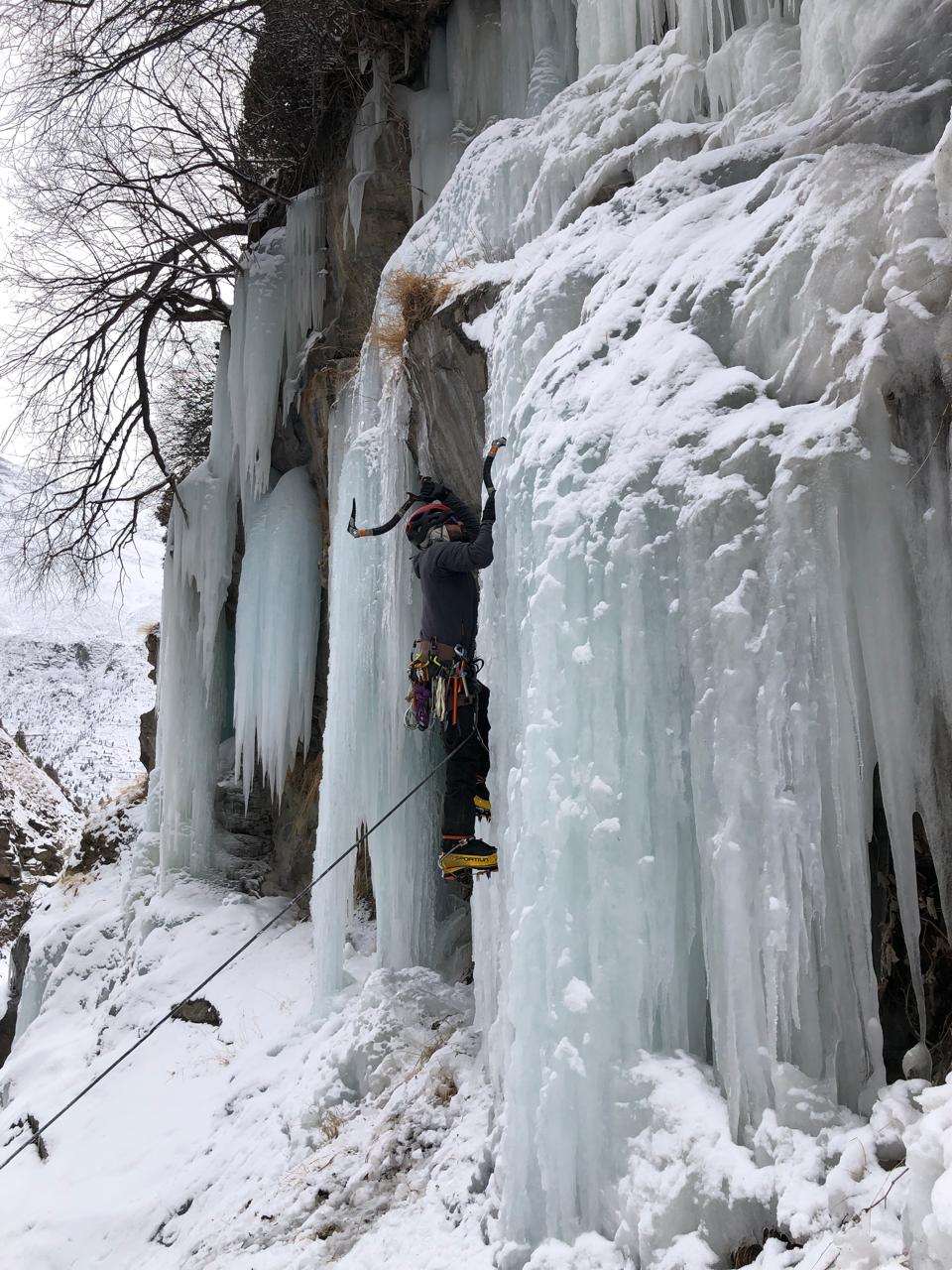
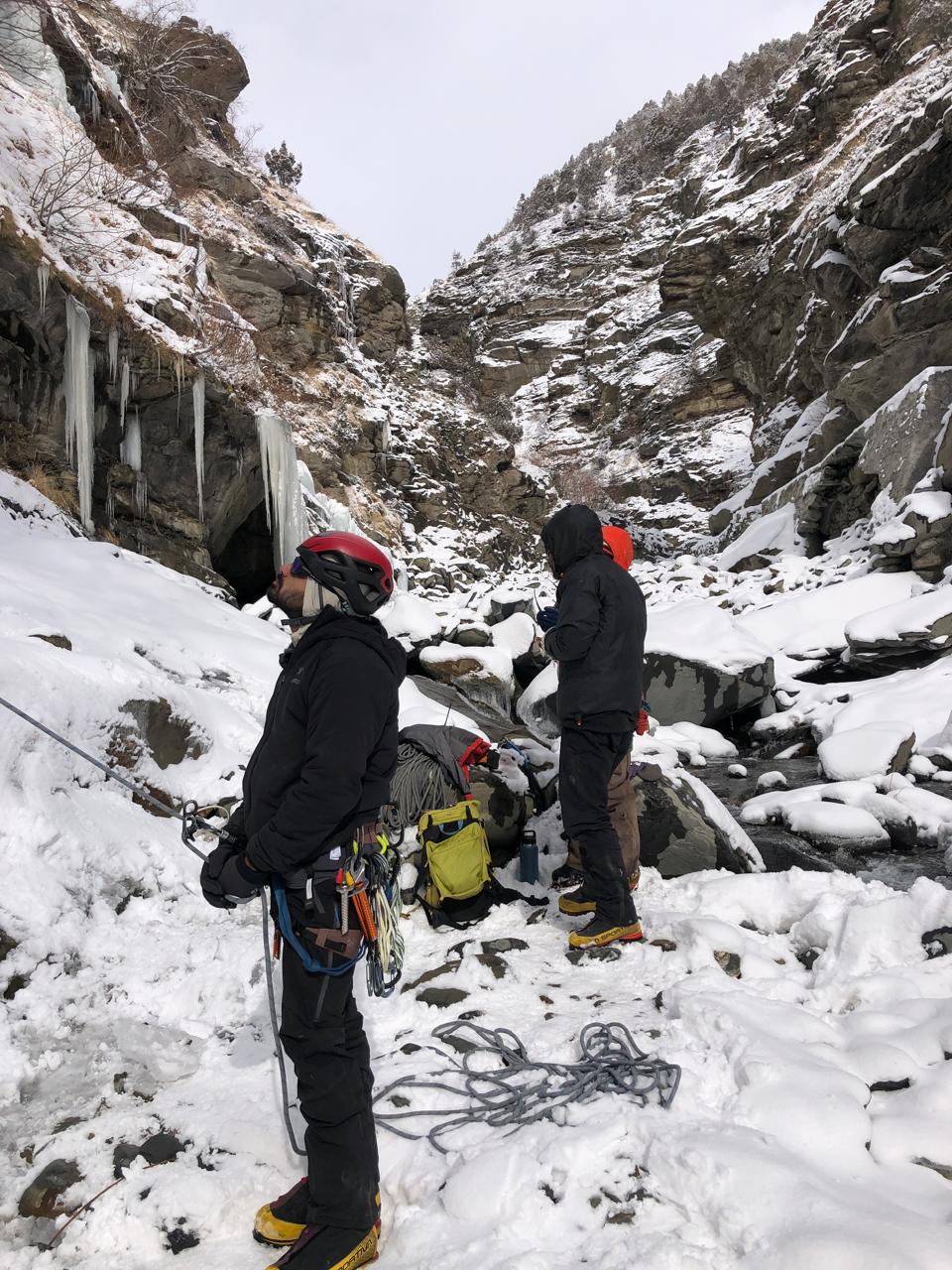
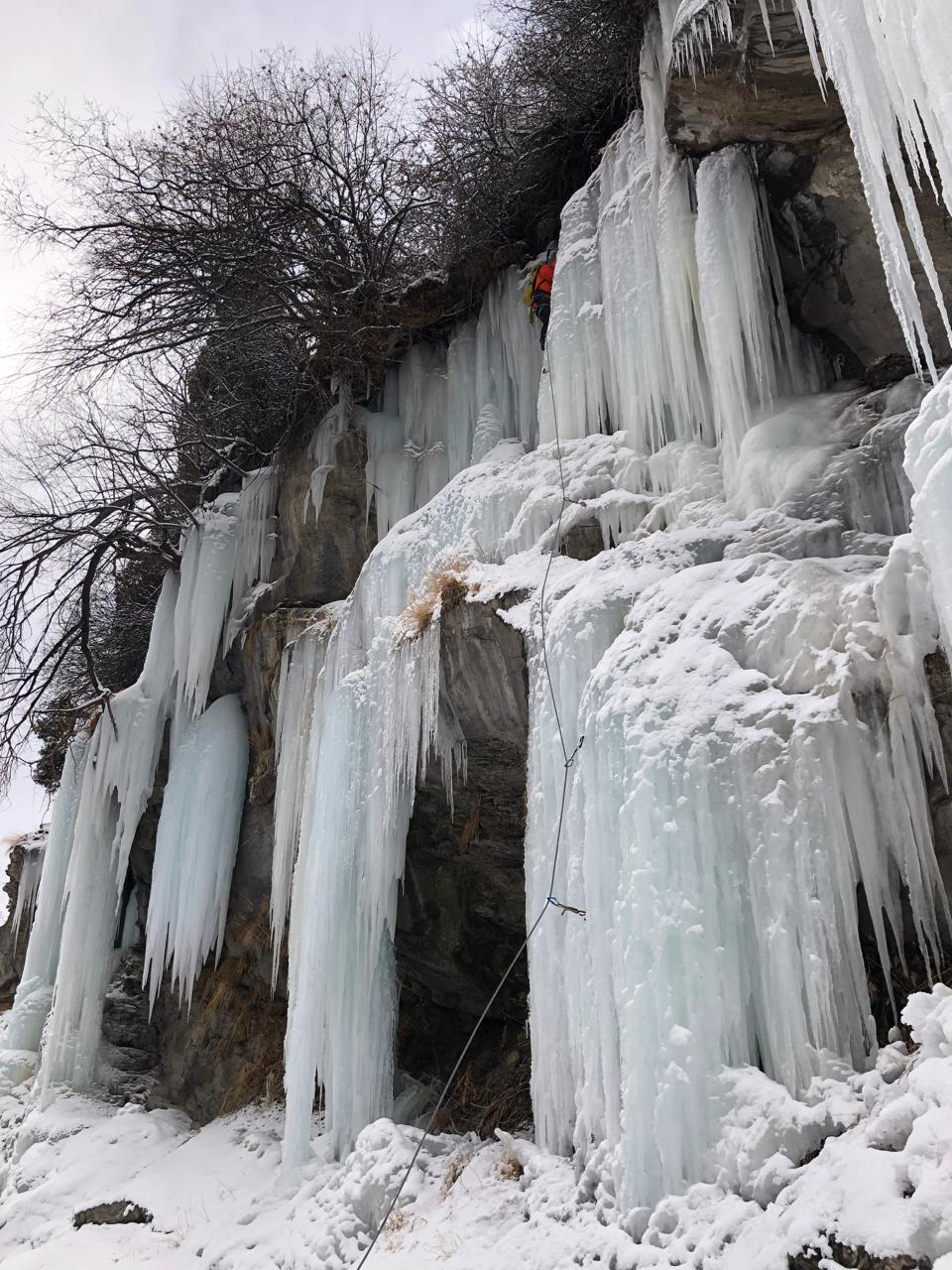
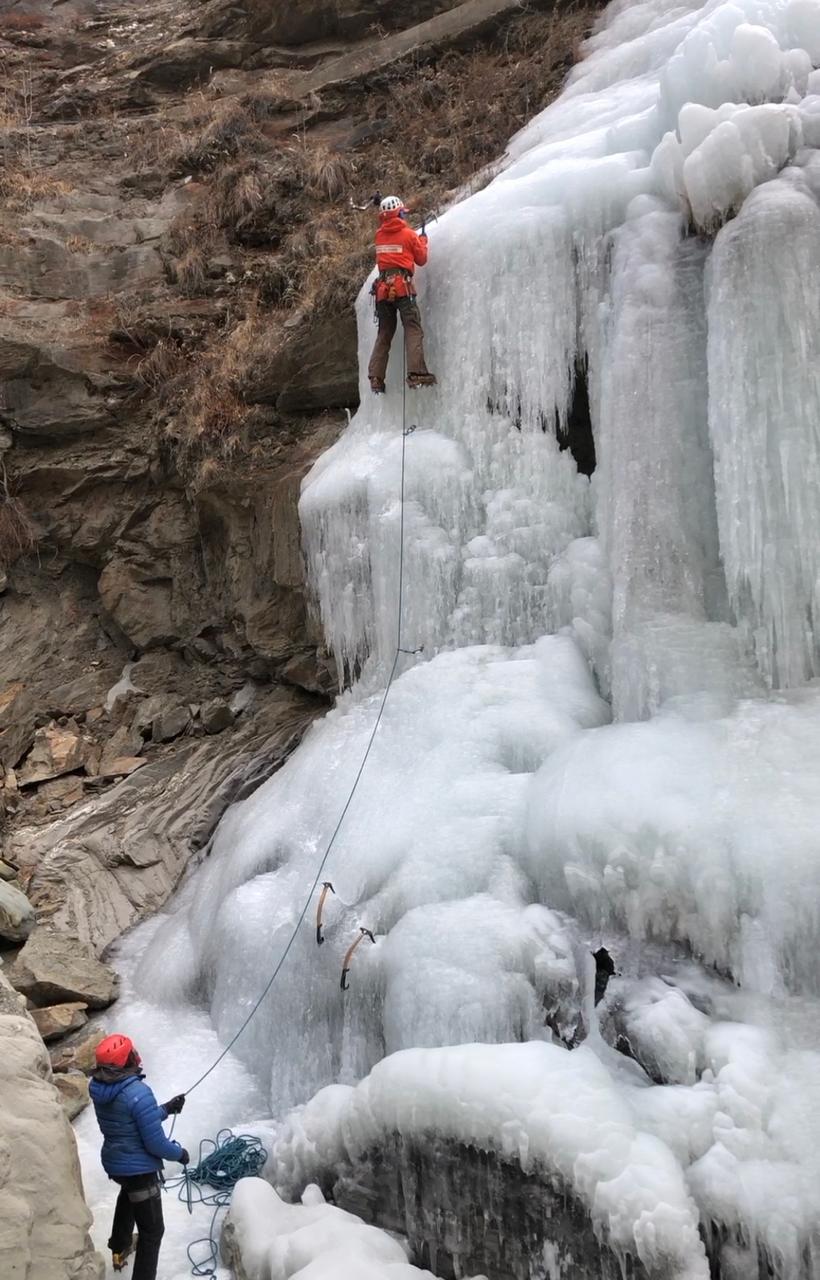
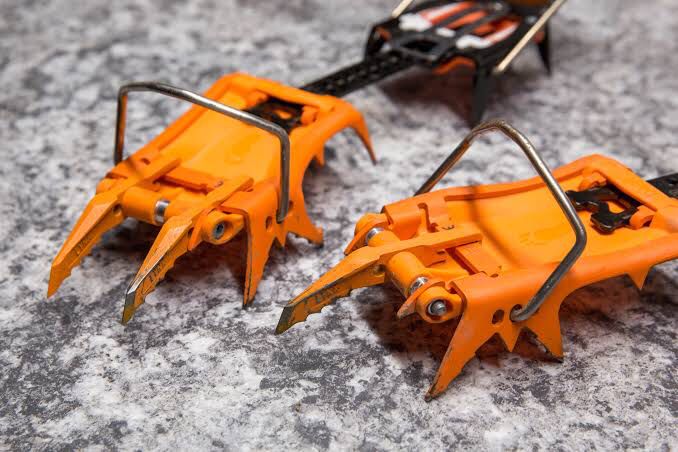
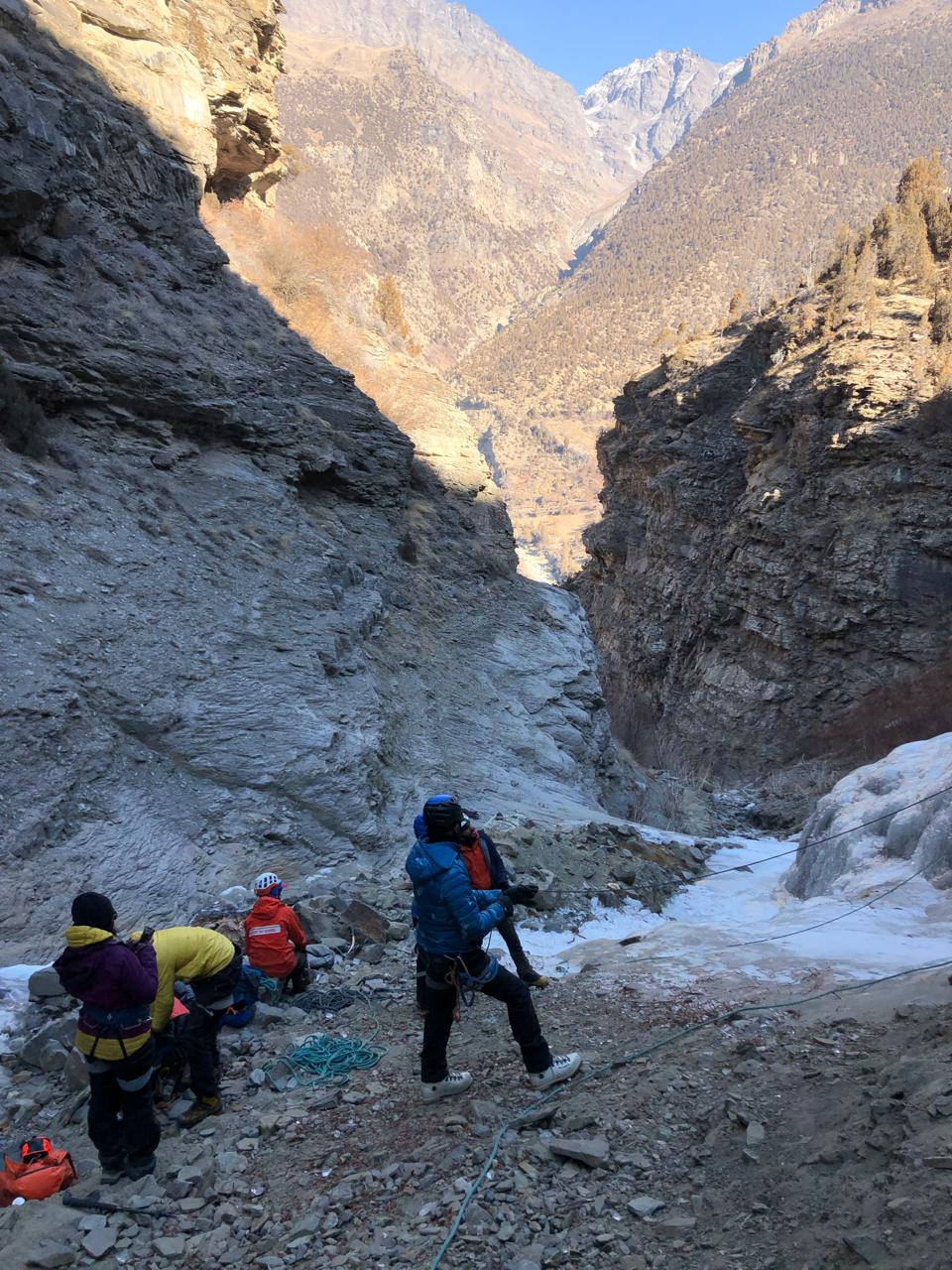
Course Itinerary
Day 1: Arrival and Introduction
Arrival at Keylong, check into the lodge
Evening: Briefing: Gear overview and checks. Introduction to the location and course area. Weather forecast and implications for activities. Important notes and safety guidelines. Summary of course proceedings and schedule
Day 2: Acclimatisation and Intro
Morning : Clothing and Layering Module:
How to wear ice climbing clothes optimallly, finding the right mix of warmth to performance. How to effectively preprare of climbing trips and common mistakes and how to avoid them
Afternoon: Acclimatization Hike : We discuss nuances of effective acclimatization for high altitude projects, phased acclimatization planning, common errors, consequences of lack of acclimatization.
Evening: Intro Avalanche talk
Day 3: Intro to Ice Climbing and Belaying
Morning: Introductory Sessions : Demos on gear, basic rope management, knots and belaying techniques
Afternoon: Ice Climbing Techniques : Ice axe techniques and proper usage. Crampon usage and body positioning.Traversing across different ice formations
Evening: Debrief, Avalanche talk covering Backcountry dos and don'ts, terrain mapping, navigation, red flags. Review and Q&A session
Day 4: Full Day Climbing - Tool and Foot Placement
Morning and Afternoon: Top-Rope Climbing: Focus on hand tool placement and foot placement techniques. Personalized feedback and correction
Evening: Rest and Informal Q&A
Day 5: Advanced Climbing Techniques
Morning: Top-Rope Climbing: Advanced techniques and skills
Afternoon: Ice Screw Mechanics and Anchor Building, understanding ice screw mechanics and proper placement, Building and managing anchors using skis
Evening: Review and Feedback Session
Day 6: Advanced Climbing and SAR Techniques
Full Day: Application of advanced climbing skills in a more challenging environment
Evening: Practical use of avalanche beacons. Simulation of search and rescue scenarios.
Day 7: Final Climbing Session and Departure
Morning: Final Climbing Session: Applying all learned skills in a final practical session.
Afternoon: Gear Sorting and Wrap-Up.
Followed by Departure
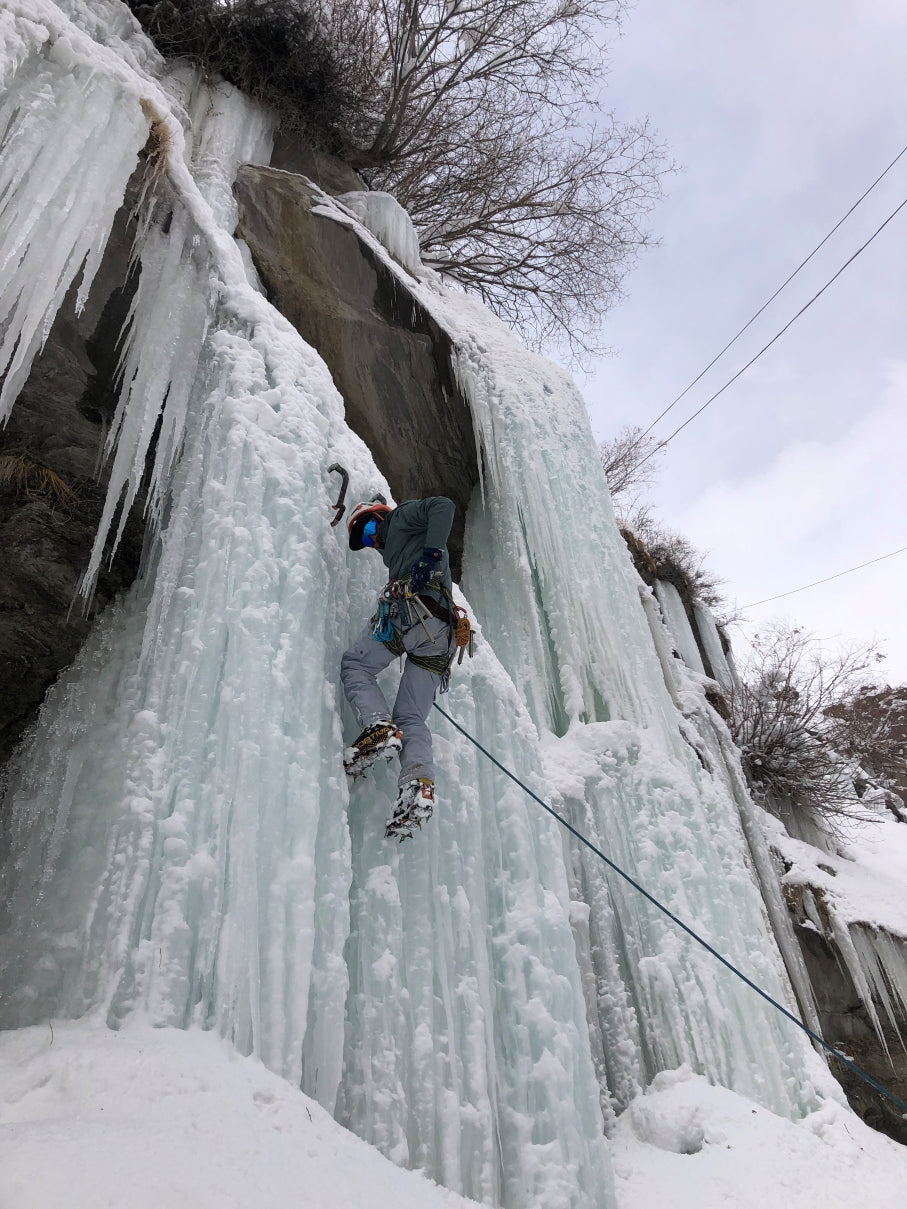
Basic Course Curriculum
Curriculum for this Program Includes, But Is Not Limited To:
- Design Concept and Selection of Ice Axes and Secondary Tools: Understanding the various types of ice axes, as selecting appropriate crampons.
- Ice Screws and Ice Anchors: Design concepts, selection, and proper placement of ice screws and other anchors used for protection and belays.
- Ice Climbing Grade System: Learning the grading system for ice climbs and interpreting guidebooks.
- Ice Axe and Secondary Tool Techniques: Techniques for placing ice axes and secondary tools, including the third tool technique.
- Cramponing Styles: Mastery of French, German, and American cramponing styles and their combinations.
- Tool and Foot Progression: Understanding the sequence of tool and foot movements, including staggered versus parallel progression.
- Top-Rope Systems: Establishing and managing top-rope systems.
- Ice Crag Hazard Assessment, Avalanche basic and Safety Protocols: Assessing hazards at ice crags and implementing safety management protocols.
Course Instructors
-
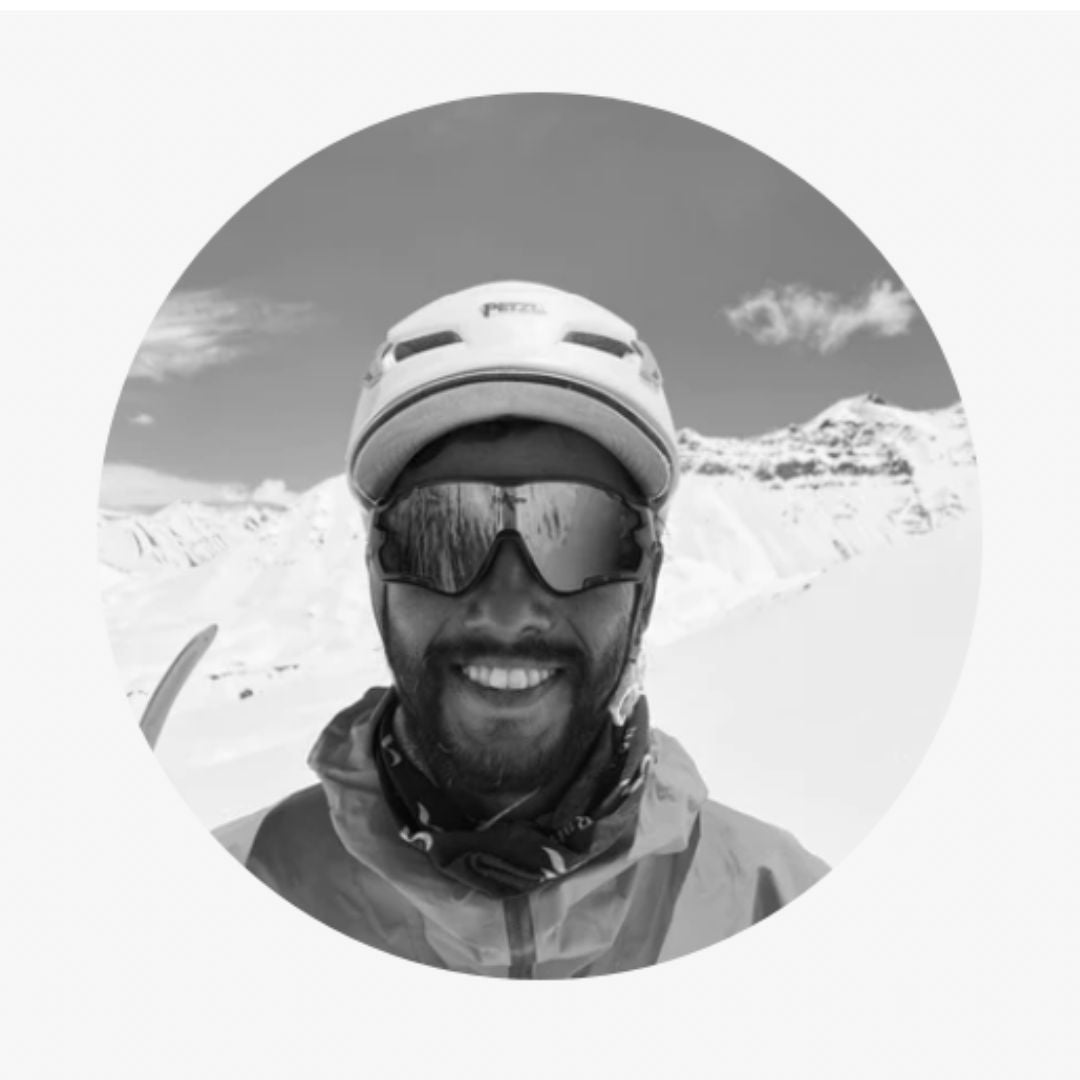
Chief Instructor
Sunil Bodh
Alpinist and Ski-Mountaineer- Numerous 6000m, 7000m summits in 20-year career,
- Former mountaineering + skiing instructor at ABVIMAS,
- Search and Rescue team - Lahaul & Spiti
- Founder Himalayan Escapades ( premium outfitter based in Keylong)
-
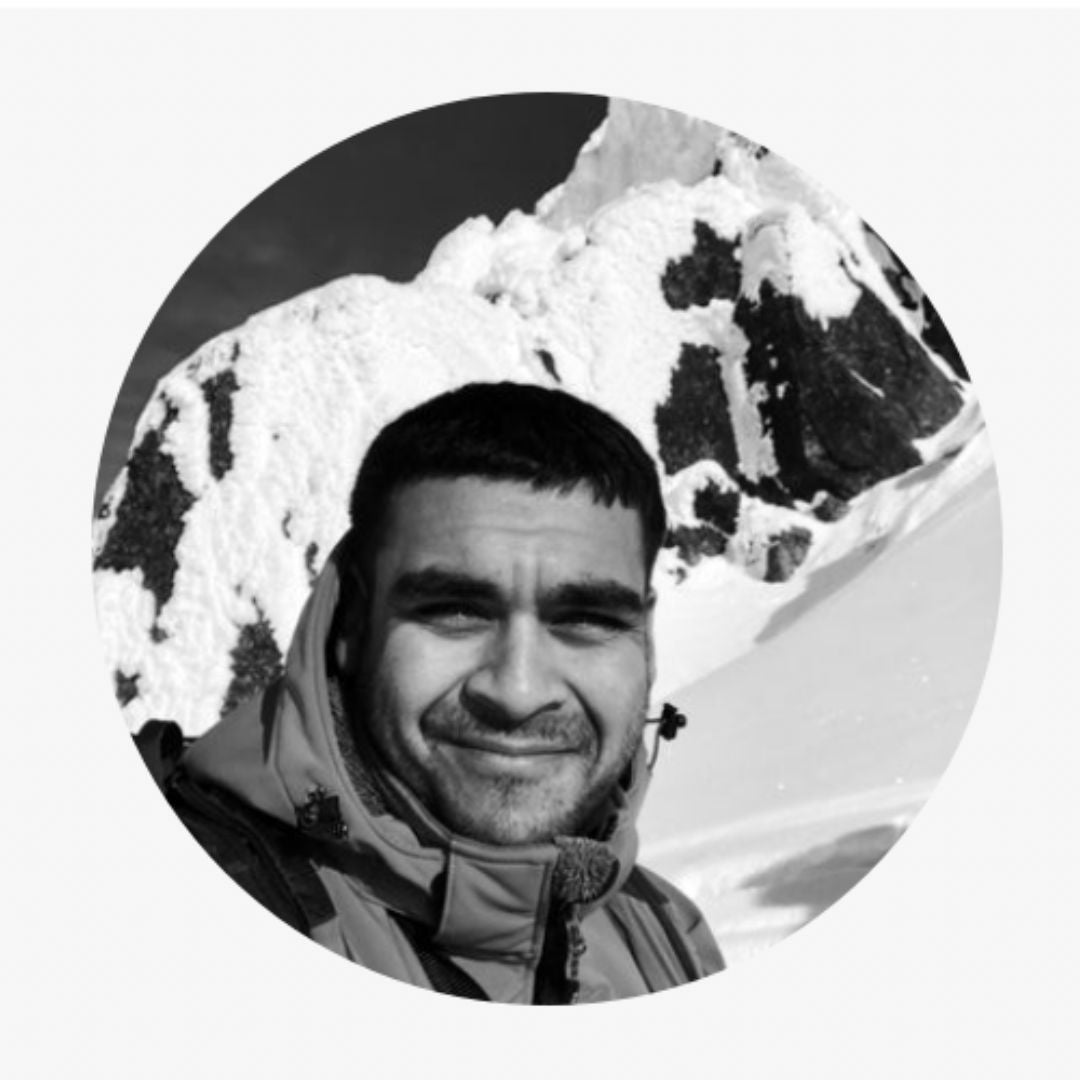
2-I-C
Dhruv Sharma
Freeride Skier- Canadian Avalanche Association- Avalanche Operations
- Avalanche Forecaster - AHF
- Volle: Duty Forecaster at Gulmarg Avalanche Center
- Numerous high-altitude ski lines across Ladakh, Kashmir, Lahaul
- Emergency First Respondent
*These two are aided by other assistant instructors and volunteers aswell

About Ice Climbing
Ice climbing blends the allure of winter environments with high-energy action. It requires not just physical strength but also technical skill and mental toughness.
In the lead discipline, climbers need precise technique and tactical mastery, maintaining composure in difficult positions. This demands a mix of skill, strategy, and resilience.
The speed discipline focuses on rapid ascents, emphasizing raw power, strength, and aggressive climbing. Each discipline presents unique challenges, pushing the limits of what’s achievable on ice.
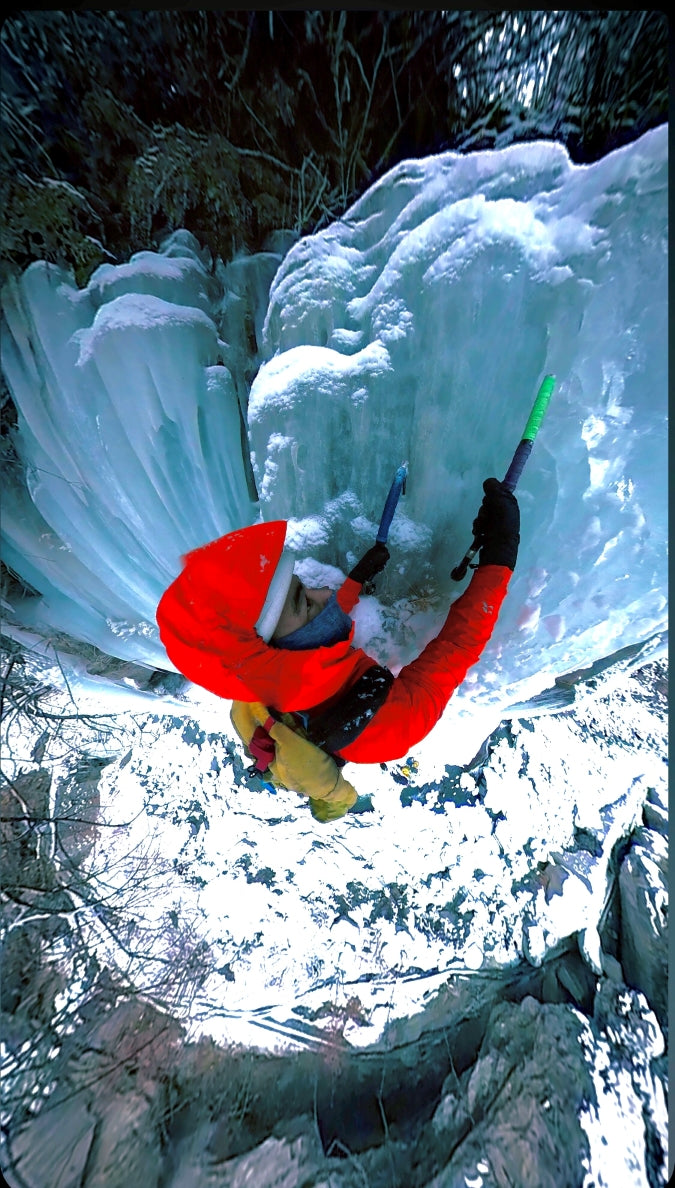
The Disciplines
Lead Climbing
Lead climbing is a discipline where climbers ascend ice formations by placing their own protection as they climb.
In lead climbing, the climber is responsible for placing ice screws or other forms of protection at intervals along the route. These placements are crucial for securing the climber and managing potential falls.
This discipline combines technical expertise with tactical decision-making, as climbers must carefully assess the ice, choose the best placement for their gear, and make calculated moves to reach the top.
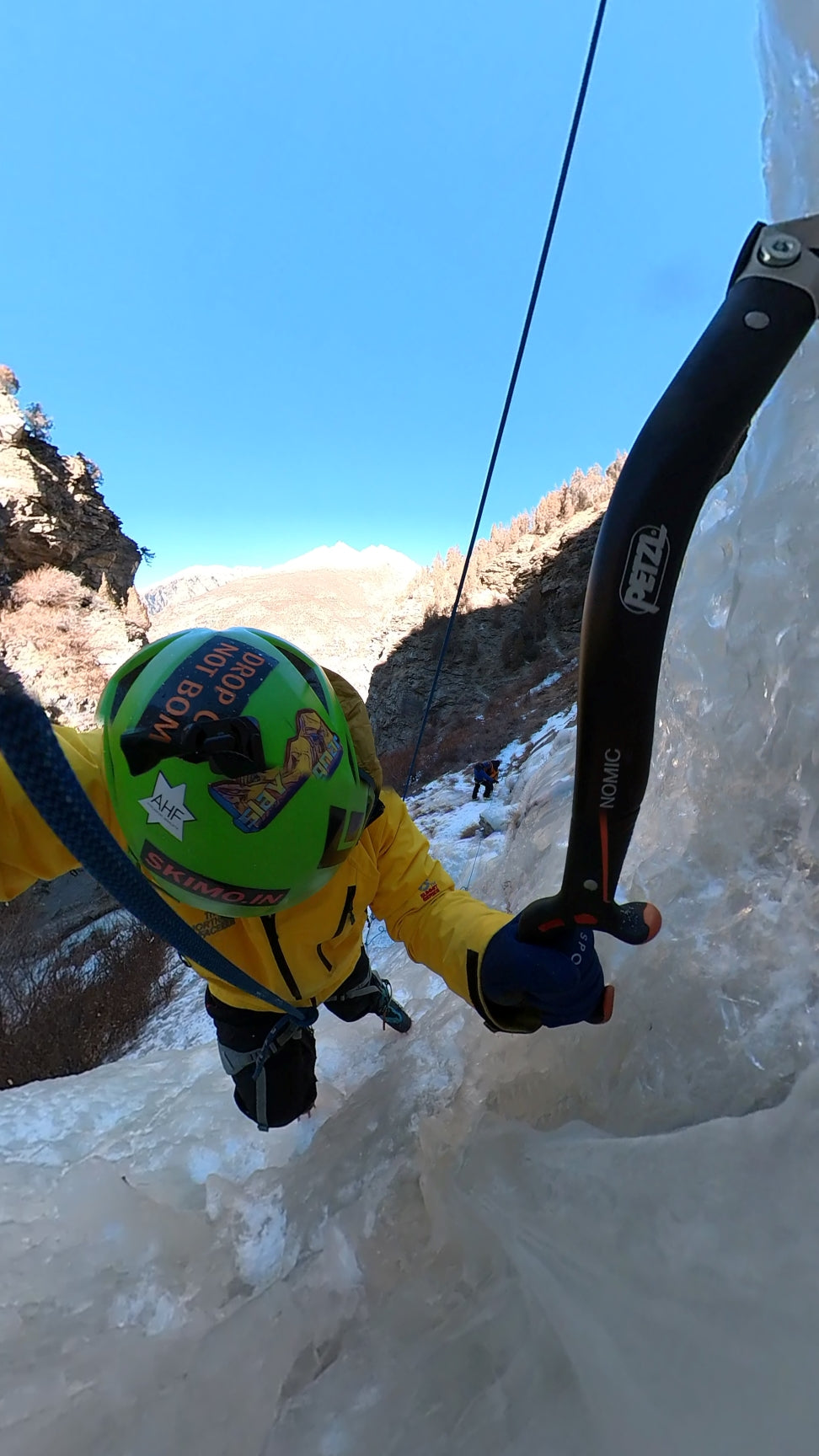
Speed Climbing
Speed climbing is a high-intensity discipline focused on rapid ascents of ice formations. In this discipline, climbers aim to reach the top as quickly as possible, emphasizing raw power, strength, and aggressive technique.
This discipline is a test of endurance and explosive strength, requiring climbers to push their limits in a vertical sprint.
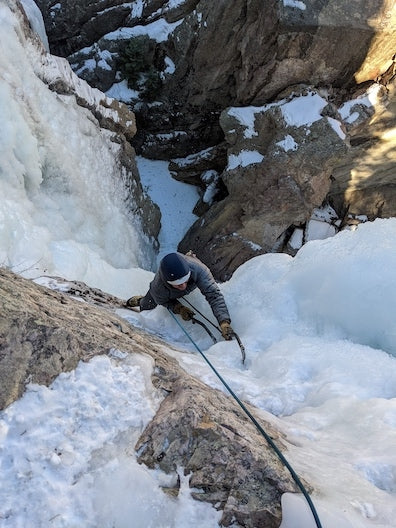
Mixed Climbing
Mixed climbing involves ascending routes that combine ice, rock, and snow. This discipline requires climbers to adapt their techniques and tools to a variety of surfaces, making it one of the most versatile and challenging forms of climbing.
FAQs about the course
Is it safe?
Yes, ice climbing is safe when conducted properly. Our guides are trained to manage risks, especially with top-rope climbing.
What kind of fitness do I need?
Quick answer : Moderate Fitness.
It can mean various things:
- you can jog 5km in under 35minutes,
- you are able to walk on mountain trails for 3-4 hrs
- can do yoga for 45 minutes daily
- lift weights regularly
To further prepare for the course, you can check out our ice climbing fitness plan.
Do I need rock climbing experience?
No prior experience is necessary. Basic climbing skills will be taught. Previous experience may expedite learning.
How difficult is it to ice climb?
Difficulty varies based on experience level and climbing goals for the day.
What happens after I book a trip?
You’ll receive a confirmation and later a list of things to pack, a pre course fitness plan. We will also work on your personal gear list.
Is gear included in my trip? Can I bring my own gear?
All climbing gear is provided. Personal gear can be brought but must be inspected by the instructors.
Can a non-climber come along?
Yes, you can have your partner or friend accompany you on the trip. Contacts us and we will tell you how to go about it.
Who takes these trips?
Anyone from ages 6 to 70.
You need to be in relatively moderate to good shape.
Ice Climbing for the soul
What makes ice climbing fun?
Climbing on frozen waterfalls involves using metal tools to ascend sheets of ice, which can be exhilarating and reminiscent of childhood play. The added challenge of staying warm in harsh conditions and the striking visuals of climbers against icy backgrounds enhance the fun.
How does ice climbing provide emotional rewards?
This sport offers emotional rewards through the sense of freedom and focus it provides. The rhythmic and fluid movements, combined with the surrounding cold and quiet beauty, create a relaxing and invigorating experience. Overcoming fears and mental challenges adds to the powerful feeling of accomplishment
What mental aspects are involved in ice climbing?
It requires mental focus and reassurance in one's abilities. Climbers must breathe, face fears, and work through challenging moves, knowing they have mitigated as much risk as possible. This mental resilience is a key part of the climbing experience.
Ice Climbing, as a lifestyle sport in India?
Joining India's ice climbing community provides a sense of belonging and camaraderie.
Climbers spend their winters discovering new routes and formations in icy valleys and gorges.
This shared passion fosters strong bonds and a supportive network, making ice climbing not just a sport, but a lifestyle choice that connects you with like-minded adventurers.
FAQs: Transitioning from Government Mountaineering Courses to Ice Climbing
I've completed basic and advanced mountaineering courses from government institutes. How can I further my skills in ice climbing?
While government mountaineering courses provide a solid foundation, ice climbing is a specialized discipline that requires modern techniques and gear.
Enrolling in a dedicated ice climbing course will help you master specific skills such as using front-point crampons, ice tools, advanced ice screw placement, building anchors, and modern rope techniques like using twin or half ropes for belaying and rappelling.
How do ice climbing courses differ from government mountaineering courses?
Ice climbing courses focus on specific techniques and modern gear that are often not covered in government courses. T
This includes advanced ice screw placement, building protection along routes, creating secure anchors, and using specialized equipment like front-point crampons and ice tools.
Why should I take an ice climbing course if I've already done basic and advanced mountaineering courses?
Basic and advanced mountaineering courses are excellent for building a foundation in general mountaineering. However, ice climbing requires additional, specialized skills and knowledge
Are the rope techniques in ice climbing different from those in mountaineering courses
Yes, ice climbing involves advanced rope techniques, including the use of twin or half ropes, specific belaying methods, rappelling techniques, cleaning protection, building V-treads and their management, etc.
FAQs: Ice Climbing in Lahaul and Spiti
What makes ice climbing in Lahaul and Spiti unique?
Ice climbing in Lahaul and Spiti offers a remote, pristine environment with stunning high-altitude landscapes and rich amalgamation of Hinduism and Buddhist culture. The challenging weather and altitude add to the adventure.
What kind of climbing conditions can I expect?
Expect extreme cold, unpredictable weather, and varied terrain that includes both ice and mixed climbing routes. The high altitude requires proper acclimatization.
Are there cultural experiences available?
Yes, the region is rich in Buddhist culture. You can extend your stay and visit ancient monasteries and interact with local communities.
What kind of terrain will I encounter?
You'll encounter a mix of ice climbing on frozen waterfalls and mixed routes combining rock and ice. The terrain is diverse, offering challenges for both beginners and experienced climbers.
Can I work from home, while on the course
Yes at times, our students do this.
Although the course is intensive and you will be busy from breakfast untill evening tea.
You can however, work easily, post or pre course, if you choose to have an extended holiday here.
Are guided or fun climbing tours available?
Yes, post the course, you can hire one of our instructors and go fun climbing on a daily basis. Usually, a group of students who continue to stay after the course do this for a few days.
They are able to share the guide and gear rental fee. Plus get some exposure to new terrain and practice.
Locations and Winter Accessibility
Where is Manali located?
Manali is a town nestled in the mountains of Himachal Pradesh, India.
It lies in the Kullu Valley and is half a days drive from Delhi
Where is Keylong located?
Keylong is the administrative center of the Lahaul and Spiti district in Himachal Pradesh, India.
It is located about 2 hrs drive north of Manali and lies along the Manali-Leh Highway.
How can I access Manali during winter?
Manali is accessible year-round via road.
During winter, the main routes are well-maintained.
Regular bus services and taxis operate between Manali and major cities like Delhi and Chandigarh
How can I access Keylong during winter?
The Atal Tunnel, which bypasses Rohtang Pass, provides a reliable route to Keylong during winter months.

